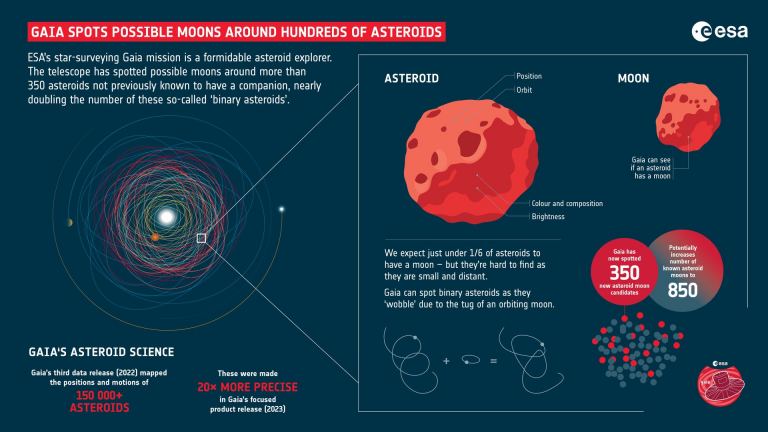The Gaia mission, primarily known for its efforts to chart stars across the Milky Way, has recently made an unexpected and thrilling contribution to our understanding of the solar system. In its latest data release, Gaia has identified hundreds of asteroid moons, or binary asteroids, lurking in the depths of space. This discovery nearly doubles the number of known binary asteroids, significantly expanding our knowledge of these small yet fascinating celestial bodies.
The discovery of these 352 new binary asteroids is more than just a fascinating tidbit—it’s a revelation that changes how we understand the population of asteroids in our solar system. Binary asteroids are systems where a smaller moon orbits around a larger asteroid, and they are notoriously difficult to detect because of their small size and great distance from Earth. Until now, we knew of only about 500 binary asteroids, but Gaia’s precision astrometry has revealed that there are many more waiting to be discovered.
Gaia’s success lies in its ability to make incredibly precise measurements of celestial objects’ positions and motions. The spacecraft’s astrometric surveys, which were not specifically aimed at finding asteroids, have inadvertently uncovered these moons by detecting slight shifts in the positions of more than 150,000 asteroids over time. These tiny shifts, caused by the gravitational pull of an accompanying moon, are enough to give away the presence of a binary system.

The significance of this discovery extends beyond simply increasing the count of known binary asteroids. It sheds light on the complex dynamics of asteroid systems and the history of our solar system. Binary asteroids likely form through a variety of processes, such as collisions that cause fragments to coalesce into a companion or gravitational interactions that capture a smaller body into orbit around a larger asteroid.
By studying these systems, scientists can gain insights into the conditions and processes that were present during the early stages of the solar system’s formation.
Moreover, Gaia’s findings also contribute to our understanding of asteroid composition. The mission’s instruments have not only pinpointed the positions of these asteroids but have also gathered spectroscopic data on the reflected light from their surfaces. This data provides valuable clues about the materials that make up these asteroids, offering a glimpse into the primordial building blocks of our solar system.
Looking forward, the ongoing Gaia mission and future data releases promise even more discoveries.
credits:



















